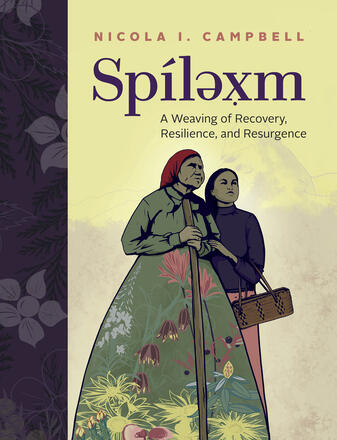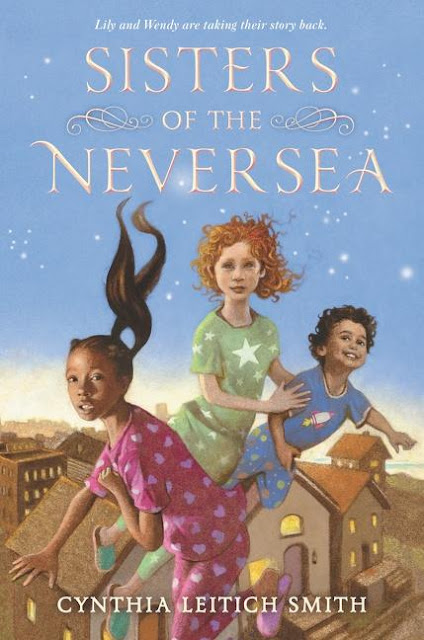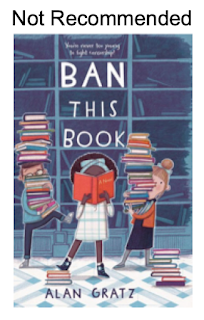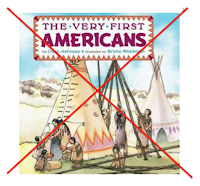Indigenous Milestones in Children's Literature
Compiled by Debbie Reese (Nambé Owingeh) and Jean Mendoza (White)
American Indians in Children's Literature
In
Milestones for Diversity in Children's Literature and Library Services (published in the fall 2015 issue of
Children and Libraries) Kathleen T. Horning lays out significant developments in children's literature. In the article she makes the point that progress "is often measured by firsts--the first Newbery Medal given to an author of color" and so on.
Debbie Reese (tribally enrolled, Nambé Owingeh) launched American Indians in Children's Literature in 2006 with the intent of sharing what she learned as she researched, analyzed, and wrote about representations of Indigenous peoples in children's and young adult books. In some places she has written about key moments that mark progress, but she has not gathered them together in a list of milestones--until now.

With this post on July 21, 2021,
American Indians in Children's Literature begins our effort to bring forth a list of milestones. It includes general milestones (like when the Newbery Medal was established) but its focus is on milestones of achievement--for Native peoples in children's literature. Its focus is on Indigenous Peoples of the Tribal Nations in what is currently known as the United States. Please submit comments about items that can be added, and corrections that need doing! Anything--by anyone--that attempts to list milestones is a work-in-progress. We find new things, and those milestones shift! What we share below is accurate to the best of our knowledge. When we learn that a milestone we've listed is not "a first" as we describe, we will make a correction. [Note: this post will be copy/pasted into a
Page that you can see in the menu bar beneath AICL's logo. When updates are done, they will be made there rather than here.]
****
1881
"Nedawi"--a short story written by Susette LaFlesche (Omaha) is published in the children's magazine, St. Nicholas: An Illustrated Magazine for Young Folks. For the author's name, the magazine used "Bright Eyes" -- an English translation of her Omaha name. It is the first Native-authored story to be published in that magazine.
1900
The Middle Five: Indian Boys at School by Francis LaFlesche (Omaha) is published by Small, Maynard & Company. The cover illustration was by Angel De Cora
(Hōcąk Nīšoc Haci [commonly known as Ho-Chunk]). The original printing of the book is available online through Google Books. the book is an account of the author's life as a student in a Presbyterian mission school in Nebraska. On page 93, Robert is asked to read aloud from their reading lesson for the day. He reads "Come, come, come, the Summer now is here." That poem appears on page 17 of My Little Hymn Book published in 1850. For more on boarding schools run by the churches or the US government where the goal was to "kill the Indian, save the man" and to "civilize and Christianize" Native people, see AICL's list of recommended materials (children/YA books/college-level texts, websites, videos) on boarding and residential schools. The Middle Five was used at the Day School at Santa Clara Pueblo (day schools were part of the US government's boarding school system), in 1904.
1902
Indian Boyhood by Charles Alexander Eastman (Dakota) is published by McClure, Philips & Co. Illustrated by E. L. Blumenschein (not Native). It is based on stories Eastman published in
St. Nicholas: An Illustrated Magazine for Young Folks in 1893.
Indian Boyhood was used at the Day School at Santa Clara Pueblo (day schools were part of the US government's boarding school system), in 1904.
1922
The Newbery Medal is established by the American Library Association, with the intent of encouraging distinguished writing for children.
*
TayTay's Tales, illustrated by Fred Kabotie (Hopi) and Otis Polelonema (Hopi) is published by Harcourt, Brace and Company. Written by Elizabeth Willis DeHuff (not Native), it is advertised in Volume 130 of The Atlantic Monthly. Kabotie became known around the world for his art. In the preface, DeHuff writes that "Taytay" means "grandfather." It is, in Debbie's view, a phonetic spelling for the Tewa word for grandfather and is the word she used when speaking to her Hopi grandfather. Some of the stories in the book are from the pueblos that speak Tewa; some are not. Also in the preface, DeHuff calls the stories "folktales" but we disagree with that label, when applied to origin or creation stories told by Native peoples. We have not analyzed the stories for authenticity.
1936
Feast Day in Nambe is published by the Office of Indian Affairs, Department of Interior, with illustrations by students who attended Santa Fe Indian School, including Emilio Sanchez, Ben Quintana, Paul Lucardio, and Seferino Pino. It is the first in a series of primers for use with Native children. The
Report of the Department of the Interior for 1936 states the primers were printed as student projects by the Haskell Institute and Chilocco printing department, that the selections were written by Native children (and were edited "only slightly").

School Days in San Juan is published by the Office of Indian Affairs, Department of Interior, with illustrations by students who attended Santa Fe Indian School: Jose Dolores Pecos, Tom Jay, Lorenzo Garcia, Margaret Naranjo, Clarence Gutierrez, Joe Aguilar, Marie Trujillo, Tomacita Vigil, and Ben Quintana. It is the fourth booklet in the primer series published at Haskell Institute. It includes writings by children at San Juan Pueblo (currently known as Ohkay Owingeh).
*
Third Grade Home Geography is published by Tesuque Printers. Five children at Tesuque Pueblo's day school were the Tesuque Printers. Their teacher was Ann Nolan Clark. They made seven copies of the book in their classroom. The entries in Third Home Geography were written by Clark, based on the children's writings about their homes. Over the next years, Clark went on to do similar books for children at other U.S. boarding schools. Some of the books were also available in a tribal language. One example is Singing Sioux Cowboy / Lak'ota pte'ole hoksila lowansa, published in 1945. Written by Clark, it was translated by Emil Afraid-of-Hawk and illustrated by Andrew Standing Soldier.
1937
The Caldecott Medal is established by the American Library Association, to recognize the most distinguished American picture book.
1939
I Am A Pueblo Indian Girl a picture book written by E-Yeh-Shure (English name: Louise Abeita) of Isleta Pueblo was published by William Morrow and Company (founded in 1926 and now an imprint of HarperCollins). Illustration's were done by Allan C. Houser (Chiricahua Apache). E-Yeh-Shure was thirteen at the time of the book's publication.
1942
Velino Herrera of Zia Pueblo, wins a Caldecott Honor for illustrations in In My Mother's House. It was first published as part of a series of readers for Native children. In that series, its title was Third Grade Home Geography (for more details see the entry for 1936).
1954
Runner in the Sun: A Story of Indian Maize, written by D'Arcy McNickle (Flathead), illustrated by Allan C. Houser (Apache), is published by John C. Winston Company. It was listed in Anna Lee Stensland's Literature by and about the American Indian: An Annotated Bibliography for Junior and Senior High School Students, published in 1973 by the National Council of Teachers of English and we include it here as the first middle grade book published by a Native writer.
1966
Summer Water and Shirley by Durango Mendoza, Muscogee, takes the Mahan Short Fiction Award at University of Missouri, Columbia. It is the first work by a Native writer to win this award. Mendoza's story has appeared in anthologies used with high school students.
1972
Jimmy Yellow Hawk, written by Virginia Driving Hawk Sneve (Rosebud Sioux) and illustrated by Oren Lyons (Seneca) is published by Holiday House. Sneve's publication was the outcome of advocacy by the Council on Interracial Books for Children, founded in 1965 to promote literature that better reflected society. In 1969, the Council on Interracial Books for Children sponsored its first writing contest, designed to locate and encourage previously unpublished African American, Asian American, and Native American writers. Sneve was among the people CIBC selected.
1977
Simon Ortiz (Acoma) and Sharol Graves's (Absentee Shawnee) epic history, The People Shall Continue, is published by Children's Book Press. It is the first use of the word "Nation" in a book for children. A 40th Anniversary edition was published by Lee and Low in 2017.
1981-1982
Acoma Partners in Basics, a writing workshop funded by VISTA (a federally funded program created in 1964, called Volunteers in Service to America) to develop materials for instructional use in tribal communities like Acoma Pueblo, publishes two booklets for children of Acoma: Simon Ortiz's Little Blue and Little Red (illustrated by Hilda Aragon) in 1981 and in 1982, The Importance of Childhood. Unlike the primers written by Ann Nolan Clark in the 1930s, these books are written by a tribal member.
1983
Homer Little Bird's Rabbit by Limana Kachel is published by the Montana Council for Indian Education. Illustrated by Northern Cheyenne children from Lame Deer School, and from Labre Indian School, it is the first children's picture book about boarding school.
1989
W. W. Norton & Co. publishes New Worlds of Literature (Jerome Beaty and J. Paul Hunter, eds.) its first intentionally "multicultural" anthology of US literature. The Norton anthologies were/are widely used in literature survey courses, as they both reflected and (to an extent) determined the canon encountered by freshman and sophomore university students. New Worlds features work by several Native-identified writers, including Lance Henson (Cheyenne), Carter Revard (Osage), Louise Erdrich (Ojibway), Simon J. Ortiz (Acoma), Linda Hogan (Chickasaw), Wendy Rose (Hopi/Miwok), Paula Gunn Allen (Sioux-Laguna), Peter Blue Cloud (Mohawk), Ray A. Young Bear (Meskwaki), Leslie Marmon Silko (Laguna Pueblo), Nora Dauenhauer (Tlingit), N. Scott Momaday (Kiowa), Durango Mendoza (Muscogee).
1999
The Birchbark House written and illustrated by Louise Erdrich (Turtle Mountain) is a finalist for the National Book Award. Set in 1847 on Lake Superior, it is followed by several books that chronicle the story of an Ojibwe family through decades of life as they grow older and adjust to Europeans who come onto their homelands. They are The Game of Silence, The Porcupine Year, Chickadee, and Makoons.
2001
Our Journey written by Lyz Jaakola (Ojibwe) and illustrated by Karen Savage-Blue (Ojibwe) is the first board book written and illustrated by Native people. A bilingual book, it is published by the Fond du Lac Band of Lake Superior Chippewa.
2006
The American Indian Library Association presents its first biennial American Indian Youth Literature Awards (AIYLA) at the Joint Conference of Librarians of Color. The awards honors the very best writing and illustration by Native Americans and Indigenous Peoples of North America in three categories. The inaugural award winning books are Beaver Steals Fire: A Salish Coyote Story in the Best Picture Book category; Birchbark House in the Best Middle Grade Book category, and Hidden Roots in theBest Young Adult Book category.
2008
Welcome Song for Baby: A Lullaby for Newborns by Richard Van Camp (Dogrib) is gifted to every baby born in British Columbia that year. It is the first mass distribution of a book by a Native writer.
2012
Super Indian by Argon Starr (Kickapoo) is published. It is the first comic to be written and illustrated by a Native woman.
2018
The American Indian Library Association's Executive Board and its Youth Literature Award Committee rescinds the youth literature award it bestowed on Sherman Alexie in 2008 for
The Absolutely True Diary of a Part-Time Indian due to allegations of sexual misconduct. It is the first time a children's literature award has been rescinded. Their
statement reads, in part,
"The books we select represent the very best for our kids and our communities. We believe that writers are members of our communities who we can look to as role models for our youth. We cannot, therefore, recommend Mr. Alexie's books, and we have decided to rescind our 2008 Best YA Book Award for The Absolutely True Diary of a Part-Time Indian. In rescinding this award, we hope to send an unequivocal message that Alexie's actions are unacceptable."
2019
Joy Harjo (Muscogee Creek) appointed to be U.S. Poet Laureate. She is the first Native poet appointed to that honor, and was appointed again in 2020 and in 2021.
*
Debbie Reese (Nambé Owingeh) is selected to deliver the 2019 Arbuthnot Honor Lecture by the Association of Library Service to Children, a division of the American Library Association.
*
HarperCollins launches Heartdrum, a Native-focused imprint. It is led by Cynthia Leitich Smith (Muscogee Creek) and Rosemary Brosnan (white). Its logo is designed by Nasuġraq Rainey Hopson (Inupiaq).
2020
Fry Bread: A Native American Family Story written by Kevin Maillard (Seminole) is the first book by a Native writer to win the Robert F. Sibert Informational Book Medal.
*
Marcie Rendon, citizen of the White Earth Nation, is the first Native writer to win the McKnight Distinguished Artist award.
*
When the Light of the World Was Subdued, Our Songs Came Through: A Norton Anthology of Native Nations Poetry edited by Joy Harjo (Muscogee Creek), is the first Norton anthology edited by a Native writer, and that contains only Native poets.
2021
We Are Water Protectors illustrated by Michaela Goade (Tlingit) is the first book by a not-white woman to win the Caldecott Medal. Authored by Carole Lindstrom (Turtle Mountain)
We Are Water Protectors is published by Roaring Book Press. Goade's acceptance speech is published in
Horn Book on June 28, 2021 and is viewable at the ALA YouTube channel:
2021 Newbery-Caldecott-Legacy Virtual Banquet.
*
Apple (Skin to the Core) by Eric Gansworth (Onondaga) is the first Native author to win a Michael L. Printz Honor. The Printz awards exemplify literary excellence in young adult literature. It was established in 2000.
*
Jo Jo Makoons: The Used-To-Be Best Friend written by Dawn Quigley (Turtle Mountain Ojibwe) and illustrated by Tara Audibert is the first chapter book series for early readers.
*
Sharice's Big Voice: A Native Kid Becomes a Congresswoman, written by Sharice Davids (Ho-Chunk) and Nancy K. Mays (non-Native) and illustrated by Joshua Mangeshig Pawis-Steckley (Ojibwe) is the first picture book about one of the first Native women elected to the U.S. Congress.
*
The Diné Reader: An Anthology of Navajo Literature, is the first publication of an anthology of all-Navajo literature.
*
Healer of the Water Monster, written by Brian Young (Navajo) and illustrated by Shonto Begay (Navajo) is the first book for middle grade readers, written and illustrated by two people of the Navajo Nation. It is published by HarperCollins.
*
Sisters of the Neversea, written by Cynthia Leitich Smith (Muscogee) and illustrated by Floyd Cooper (Muscogee), and published under the Heartdrum imprint of Harper Collins, is the first book written and illustrated by two people of the Muscogee Nation.
*
Josie Dances, written by Denise Lajimodiere (Turtle Mountain Band of Ojibwe) and illustrated by Angela Erdrich (Turtle Mountain Band of Ojibwe) is the first book written and illustrated by two people of the Turtle Mountain Band of Ojibwe Nation.
*
The first young adult hardcover to debut at the #1 spot on the New York Times best-selling books list is Angeline Boulley's (Ojibwe) Firekeeper's Daughter.






























